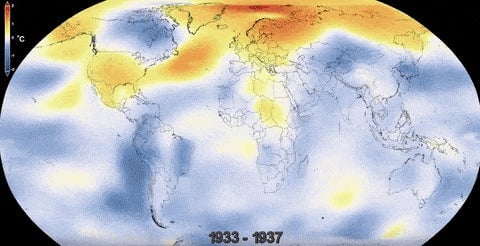Why do all our climate data start in 1880?
Headlines about record-breaking heat tend to reference a start date. These days, it’s 137 years—as in “2016 was the hottest year on record in 137 years,” or this one, about July 2017:


Headlines about record-breaking heat tend to reference a start date. These days, it’s 137 years—as in “2016 was the hottest year on record in 137 years,” or this one, about July 2017:
There’s a reason for this reference point. And no, it’s not because the temperature was the same 137 years ago; actually quite the opposite!
Here’s what’s going on: Scientists mark the start of modern global record-keeping at roughly 137 years ago, in 1880. That’s because earlier available climate data doesn’t cover enough of the planet to get an accurate reading, according to NASA. So 2016 wasn’t just the hottest year in 137 years—it’s truly the hottest year on record.
Last year also very likely broke the record for “many hundreds” of years more, according to NASA climate scientist Gavin Schmidt; the data just isn’t robust enough to make that statement definitively.
While the record of land-surface temperature predates 1880, the level of uncertainty before that year goes up considerably, as can be seen in this graph from Berkeley Earth:
But humans have been accurately recording weather data for much, much longer: People have been measuring temperature since Galileo’s time, and the modern thermometer was invented in the early 1700s. Formal weather stations, which before the mid-1800s were mostly in Europe and the US, became ubiquitous enough by 1880 to provide a robust picture of global temperature. But the vast majority of other, older climate data still isn’t digitized.
“People don’t realize, but there’s an enormous amount of data that has never been put into digital archives,” Schmidt says.
Millions of weather records, for example, are sitting in old weather offices and in ships’ logs around the world. Researchers are continuously crowdsourcing efforts to dig up and digitize historic weather data. In Uzbekistan, efforts to digitize 18 million pages of hydrometeorological data from as far back as 1867 are well under way. Similar efforts have begun in El Salvador, Malawi, and Tanzania.
The British East India Company, which traveled extensively between 1789 and 1834, collected an enormous amount of weather data. Philip Brohan, a climate scientist at the UK’s Met Office, has worked to collate hundreds of thousands of those records and digitize them to be added to the pre-1880 global climate record.
As more and more historical data gets gets incorporated into the global record, Schmidt says the 1880 benchmark could be pushed back. “I know people think the global temperature is just some number we go measure somewhere. It’s not,” he says. “The more information we have, the bigger the data set we have, the more confidence we can have in our findings.”